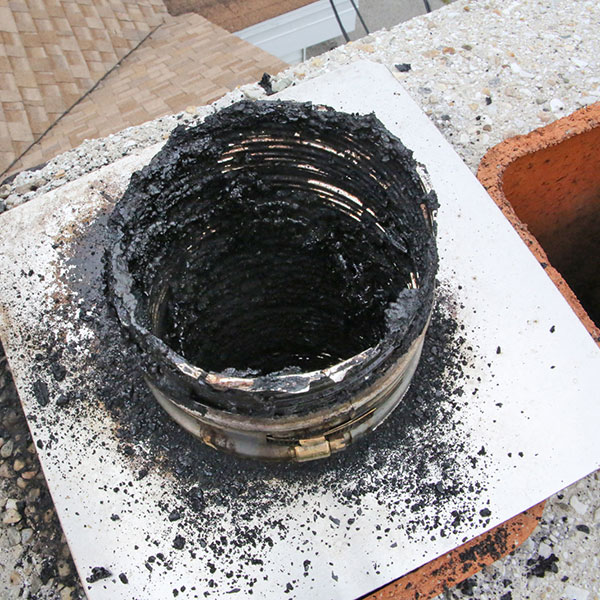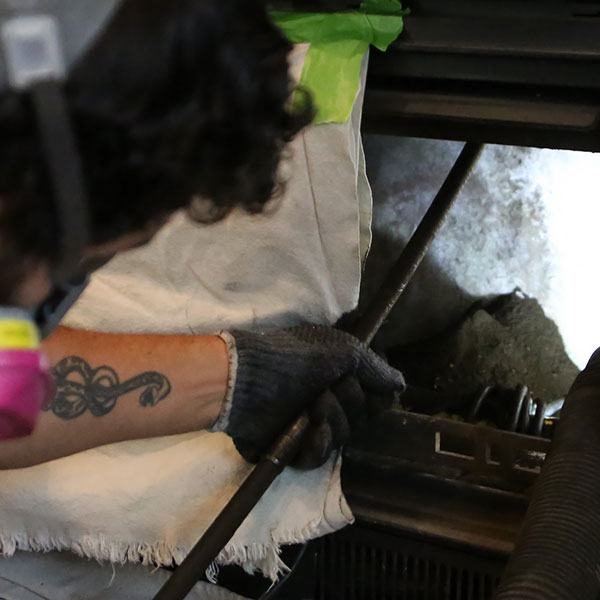Chimney Cleaning for Better Health
The fireplace is often a favorite gathering spot providing warmth and comfort on those cold wintry days and nights. Just like any other area of your home, the chimney needs periodic cleaning to remove creosote, soot, and other debris that can make your family sick. Here are four ways a dirty chimney can affect your health.
 Creosote Exposure
Creosote Exposure
Creosote is a natural combustion by-product produced by the distillation of tars in wood and fossil fuels. Without regular chimney cleaning, the oily, tarry, and flammable residue will continue to accumulate in the chimney every time you use the fireplace. According to the Chimney Safety Institute of America (CSIA), more than 1/8” of creosote in the chimney is hazardous and should be removed. Exposure to creosote can cause various side effects, including skin and eye irritation, abdominal pains, and respiratory issues. Long-term creosote exposure can lead to mental confusion in some individuals. Excessive creosote in the chimney can also cause a flue obstruction increasing the risk of exposure to carbon monoxide poisoning.
Carbon Monoxide Poisoning
Hiring a professional chimney sweep to clean the chimney at least once per year will help ensure that the smoke and fumes have a clear exit up the chimney. It is not unusual for small animals like birds, bats, and squirrels to be found building nests in chimneys. Also, on windy days leaves, twigs, and other debris can be blown into the flue if the chimney cap is damaged or missing. The small animals and debris can block the flue, causing increased carbon monoxide gas levels to leak inside your home. Carbon monoxide (CO) is an odorless and colorless gas that can have deadly consequences. Symptoms of CO exposure include headaches, dizziness, nausea, and fatigue. If untreated, it can lead to unconsciousness, organ failure, and death.
Eye and Skin Irritation
When using the fireplace in a sooty chimney, some of the smoke, creosote, soot, ash, and other contaminants may flow into your living space, irritating your eyes and skin. It can also be harmful to the skin resulting in rashes or chemical burns. Inhaling this smokey and sooty air mixture can also irritate your nose, throat, and lungs and cause respiratory issues.
 Respiratory Issues
Respiratory Issues
The dirt, dust, and other debris accumulated in a dirty chimney can expose occupants to various allergens that can cause respiratory issues in individuals with allergies, asthma, COPD, and other chronic lung or respiratory conditions. The chimney may also contain mold and bacteria. A dirty chimney also attracts pests such as rats and mice. Even if you’re not using the fireplace, a strong wind gust can blow a concoction of soot and debris into the living space reducing indoor air quality and potentially exposing occupants to harmful contaminants.
Chimney Cleaning and Inspection
Homeowners should have a professional chimney inspection and chimney cleaning at least once per year. If you use your fireplace or stove frequently during the winter, you may need additional sweeping. A professional chimney sweep has the skills, tools, and equipment to thoroughly remove the soot, creosote, and other contaminants inside the chimney so that your family can breathe cleaner air.
The post Chimney Cleaning for Better Health appeared first on Fluesbrothers Chimney Service.